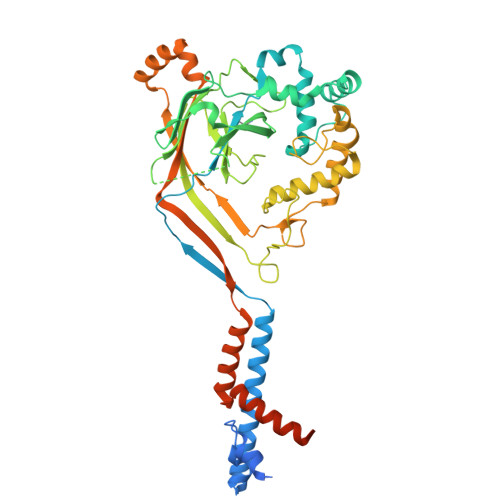The bile acid-sensitive ion channel is gated by Ca 2+ -dependent conformational changes in the transmembrane domain.
Freitas, M.M., Gouaux, E.(2025) Nat Commun 16: 6746-6746
- PubMed: 40695804
- DOI: https://doi.org/10.1038/s41467-025-62038-9
- Primary Citation of Related Structures:
9MKY, 9MKZ, 9MLV - PubMed Abstract:
The bile acid-sensitive ion channel (BASIC) is the least understood member of the mammalian epithelial Na + channel/degenerin (ENaC/DEG) superfamily of ion channels, which are involved in a variety of physiological processes. While some members of this superfamily, including BASIC, are inhibited by extracellular Ca 2+ (Ca 2+ o ), the molecular mechanism underlying Ca 2+ modulation remains unclear. Here, by determining the structure of human BASIC (hBASIC) in the presence and absence of Ca 2+ using single-particle cryo-electron microscopy (cryo-EM), we reveal Ca 2+ -dependent conformational changes in the transmembrane domain and β-linkers. Electrophysiological experiments further show that a glutamate residue in the extracellular vestibule of the pore underpins the Ca 2+ -binding site, whose occupancy determines the conformation of the pore and therefore ion flow through the channel. These results reveal the molecular principles governing gating of BASIC and its regulation by Ca 2+ ions, demonstrating that Ca 2+ ions modulate BASIC function via changes in protein conformation rather than solely from a pore-block, as proposed for other members of this superfamily.
- Vollum Institute, Oregon Health and Science University, 3232 SW Research Drive, Portland, OR, USA.
Organizational Affiliation:
















